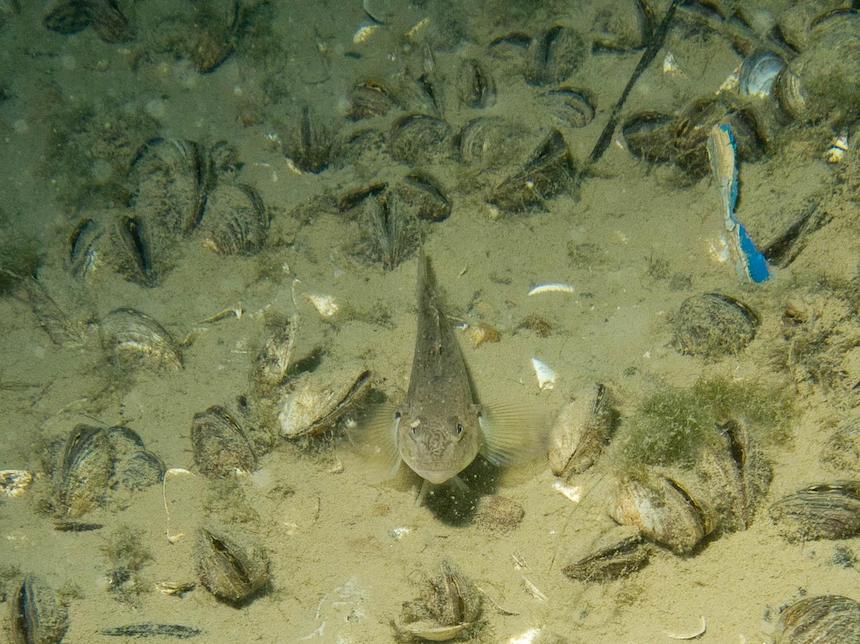
The U.S. Environmental Protection Agency has awarded five Great Lakes Restoration Initiative grants totaling more than $2.7 million for projects to control invasive species in Wisconsin.
An invasive species is a plant or animal that is foreign to an ecosystem. During the past two centuries, invasive species have significantly changed the Great Lakes ecosystem and other fresh water lakes in the state of Wisconsin. These changes have greatly affected the economy, health, and well-being of the people that rely on the system for food, water, and recreation. Once established, it is extremely difficult to control their spread.
“Invasive species are a serious problem facing the Great Lakes,” said EPA Administrator Scott Pruitt. “These grants will assist local partners in restoring the Great Lakes ecosystem while improving economies and preventing future damage to the environment.”
The grants announced today for invasive species control in Wisconsin are:
Bay-Lake Regional Planning Commission – $599,977
“Invasive species poses a significant threat to coastal wetlands and shorelines in Wisconsin. These coastal areas are critically important to fish and wildlife, recreation, and tourism,” said Angela Kowalzek-Adrians, Natural Resources Planner at the Bay-Lake Regional Planning Commission. “This grant will help us manage invasive species to promote healthy native ecosystems and livable communities.”
The Bay-Lake Regional Planning Commission will control invasive species on approximately 1,000 acres in Kewaunee County, Wisconsin. Funding will help protect high quality habitat, increase access to the coastline and nearshore areas, and improve property values in the county.
Southeastern Wisconsin Invasive Species Consortium, Inc. – $600,000
“This funding will further our commitment to prevent new introductions of invasive plant species by blocking right-of-way and urban recreational pathways through which those species can be rapidly introduced to the Great Lakes native ecosystem,” said Jill Hapner, Executive Director of the Southeastern Wisconsin Invasive Species Consortium. “New partnerships and protocols will be secured long-term to support rapid response efforts and communicate up-to-date control and management techniques.”
The Southeastern Wisconsin Invasive Species Consortium, Inc., will implement a multi-organization collaboration to control the spread of invasive species along 2,000 miles of roadways and more than 600 acres of woodland habitat. The collaboration will include local government roadway crews, property owners, community-based organizations and school groups.
Wisconsin Department of Natural Resources – $551,669
“Having this additional staff and resources will help us map and coordinate control of new and existing aquatic invasive species in those 900 acres of wetlands and lakes,” said Wisconsin DNR Secretary Dan Meyer. “Our goal is once this effort is complete, local organizations and volunteers can begin taking action to maintain, control and prevent these invasive species from taking over more lakes and wetland areas.”
The Wisconsin DNR, following a civilian conservation corps model, will hire two new employees to control invasive species in 900 acres of the Great Lakes Basin. Lake Winnebago Chain of Lakes and the Fox River above Green Bay will be targeted.
The Lakeshore Natural Resource Partnership – $598,673
“The Great Lakes are the largest network of freshwater resources in the world, and as a result are especially vulnerable to non-native species invasion. The non-native European strain of Phragmites is particularly aggressive in wetlands and shoreline habitats along Lake Michigan,” said Jim Kettler, Executive Director of the Lakeshore Natural Resource Partnership. “LNRP efforts to control and limit Phragmites spread will focus on collaboration between stakeholders including federal, state, and county agencies, local townships, private landowners, community non-profits, and natural area and right-of-way managers through the implementation of best management practices, education, and outreach.
The Lakeshore Natural Resource Partnership will control invasive species on approximately 1,370 acres of wetland and aquatic habitat in northeastern Wisconsin. The funded project will improve the ecosystem services and enhance tourism, property values and navigation.
Wisconsin Tribal Conservation Advisory Council – $393,750
“Tribes have worked very hard in the reduction of invasive species and will continue to do so through the inception of a Wisconsin Tribal Invasive Species Cooperative,” said Alan Johnson, Executive Director of the Wisconsin Tribal Conservation Advisory Council. “The continued reduction of invasive species calls for cooperative and collaborative efforts among the Tribes as well as other Weed Cooperatives in Wisconsin. WTCAC believes that through Cooperative efforts, conservation of the Great Lakes will be enhanced.”
